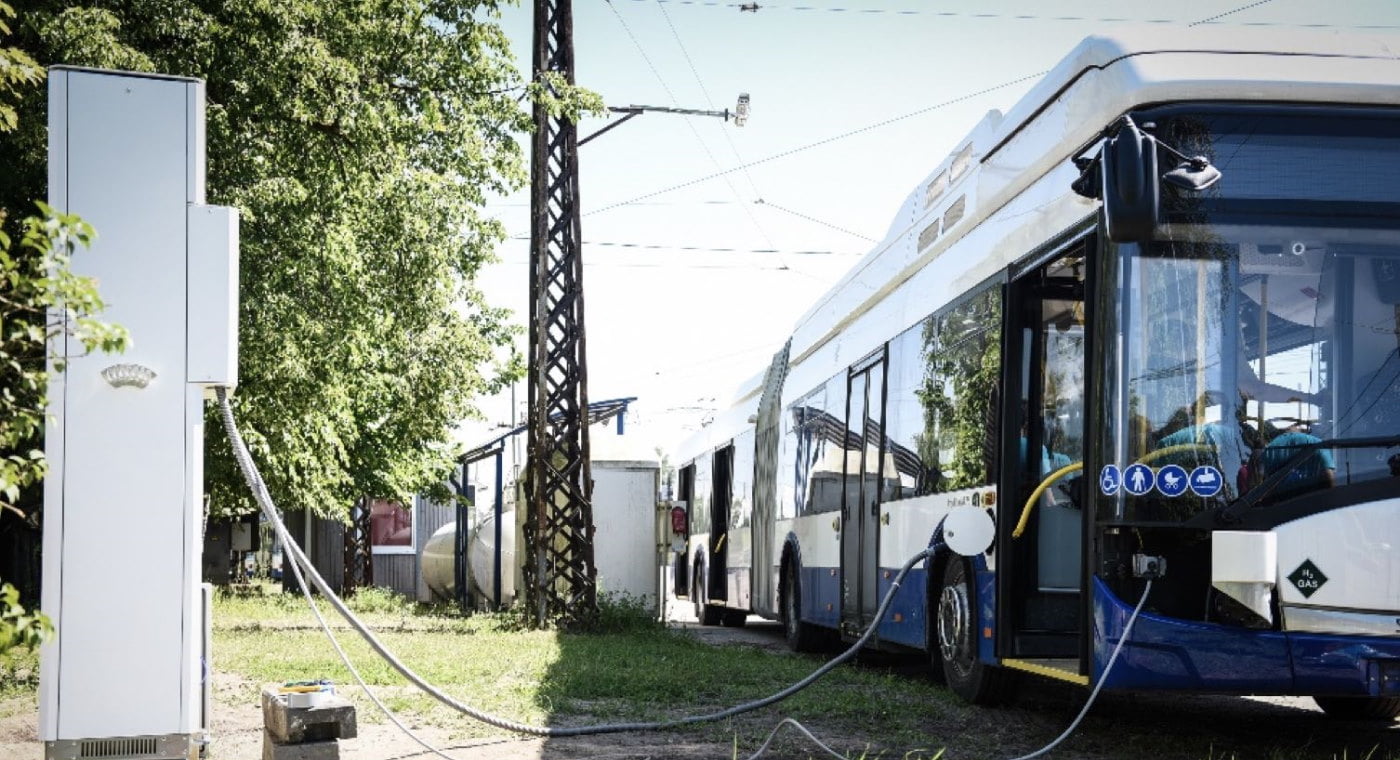Here at EKO Diena, we love the idea of hydrogen powered transport, whether it is private cars, commercial shipping, trains, airships or whatever else, obviously under the condition that the hydrogen is green.
The city of Riga also seemed to be quite into the idea of using hydrogen to power their public transport network, and in March 2020 they became one of the first European cities to put hydrogen powered trolleybuses to work on one of their transport routes. As well as buying ten of the hydrogen vehicles, the municipal public transport company SIA Rīgas satiksme built a refuelling station in the city.
But, a year and a half later, it seems that it is not all going quite as well as might be hoped. Last month the vice-mayor of Riga, Vilnis Ķirsis said that the hydrogen trolleybuses were not living up to expectations in an interview with Latvijas Avīze.
"As part of the experimental project Rīgas satiksme bought ten hydrogen trolleybuses and even build a recharging station. Unfortunately, four of those trolleybuses are regularly undergoing repairs, and every day we lose hope of seeing this form of transport develop," said Ķirsis.
He explained that in the near future there are plans for new passenger trains to be integrated into the capital citys' public transport. "We need to organize the network of routes, because some passengers choose to travel by railway. This reduces the flow of passengers in other public transport types. It is possible we may need to optimize the network, because we will not need as many buses, trolleybuses and other forms of public transport."
The number of people who own cars is increasing in Riga, as well as in most other cities across Latvia. This seems to be at odds with the the fact that a survey carried out earlier this year in Riga suggested that 60% of the residents of the city cover most of their daily transport by public transport.
Kirsis thinks that widespread use of public transport is important for the health and development of the city, "the American philosophy of getting everywhere by car doesn’t work here. If there are too many cars, they get in traffic jams. The other issue is that the people who moved out of the city want to live in peace and quiet. They also actively promote the idea of ending traffic congestion, and motor running in Riga! We live peacefully in Pieriga. In the city centre, however, we have to deal with noise, dust and exhaust gases. This is a path towards the death of the city. There are urban environments around the world, and when the centre empties, its surrounding rings become larger until they reach a size that forces residents to spend hours in the car when travelling to and from work. This is not a direction to work towards. Riga’s centre should be populated, not empty."
The total cost of the hydrogen trolleybus project in Riga was €16.1 million, with half of that amount funded by the European Union, and on paper there doesn't seem to be any reason for it not to succeed. Each trolleybus can cover 150-200km before needing to refuel, which takes around 10 minutes, and the hydrogen fuelling station is available for public use, if anyone in Latvia actually happens to own a hydrogen powered car.
As more cities across Europe are starting to experiment with hydrogen powered public transport it would be a shame for Riga to reverse their decision or choose not to build on it.
